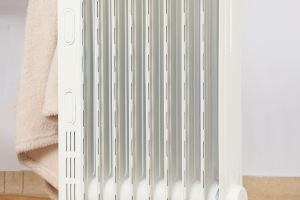To employ multiple colors in traditional embroidery, a distinct bobbin is needed for each hue. This practice has a significant impact on efficiency, leading to time loss in the rethreading process and increased production costs.
Furthermore, it restricts the scope of designs that the industry can embrace.
The Swedish firm Coloreel has pioneered a groundbreaking technology that permits the application of high-quality textile thread coloring during the embroidery process.
This revolutionary unit is being developed in collaboration with Ricoh, which will construct one of its primary subsystems based on inkjet printing technology.
The objective is to incorporate it into existing industrial embroidery machines, ultimately elevating productivity and broadening the spectrum of distinctive design possibilities.
Presently, the embroidery production process confronts a multitude of limitations.
Dyeing plants dedicated to threads can exclusively accommodate monochrome threads. Consequently, embroidery mills and factories are compelled to maintain substantial inventories of colored thread rolls to meet customer requests.
Given that thread manufacturers offer only 400-500 solid colors, customers often find it challenging to obtain their desired shade.
Additionally, embroiderers are confined to creating solid-colored stitch segments with minimal transitional or other effects that are virtually unattainable using today's technology.
From a productivity perspective, in order to meet customer expectations, embroiderers are frequently required to switch between large thread spools for different orders, a process that consumes a considerable amount of time and amplifies the setup duration for each project.
Furthermore, actual production time extends as machines necessitate halting, cutting, and replacing threads between each color section, undermining the quality of the finished product.
This technology deploys a solitary spool of thread as an alternative to multiple spools. This innovation unlocks a plethora of new colors and gradients for embroidery design, which can now be amalgamated in innovative ways, facilitating seamless color transitions and shading effects.
Dr. Mattias Nordin, the project coordinator, elucidates that by coloring the white backing threads instantaneously during the embroidery production process, Coloreel enjoys the freedom to craft unique embroideries featuring entirely novel color combinations.
The Coloreel units, aside from streamlining setup times and reducing inventory maintenance, offer superior quality and efficiency. It is approximated that the utilization of each color can enhance productivity by an average of 30-40%, and by more than 80% for intricate designs.
At the core of this transformative technology lies the Instant Thread Coloring Unit, a distinctive product that enables on-demand, immediate coloring. This unit can be effortlessly installed on both modern single and multi-head embroidery machines.
Its operation is user-friendly, featuring a smart touchscreen panel, remote control capabilities, and compatibility with standard thread speeds to align with typical production rates.


